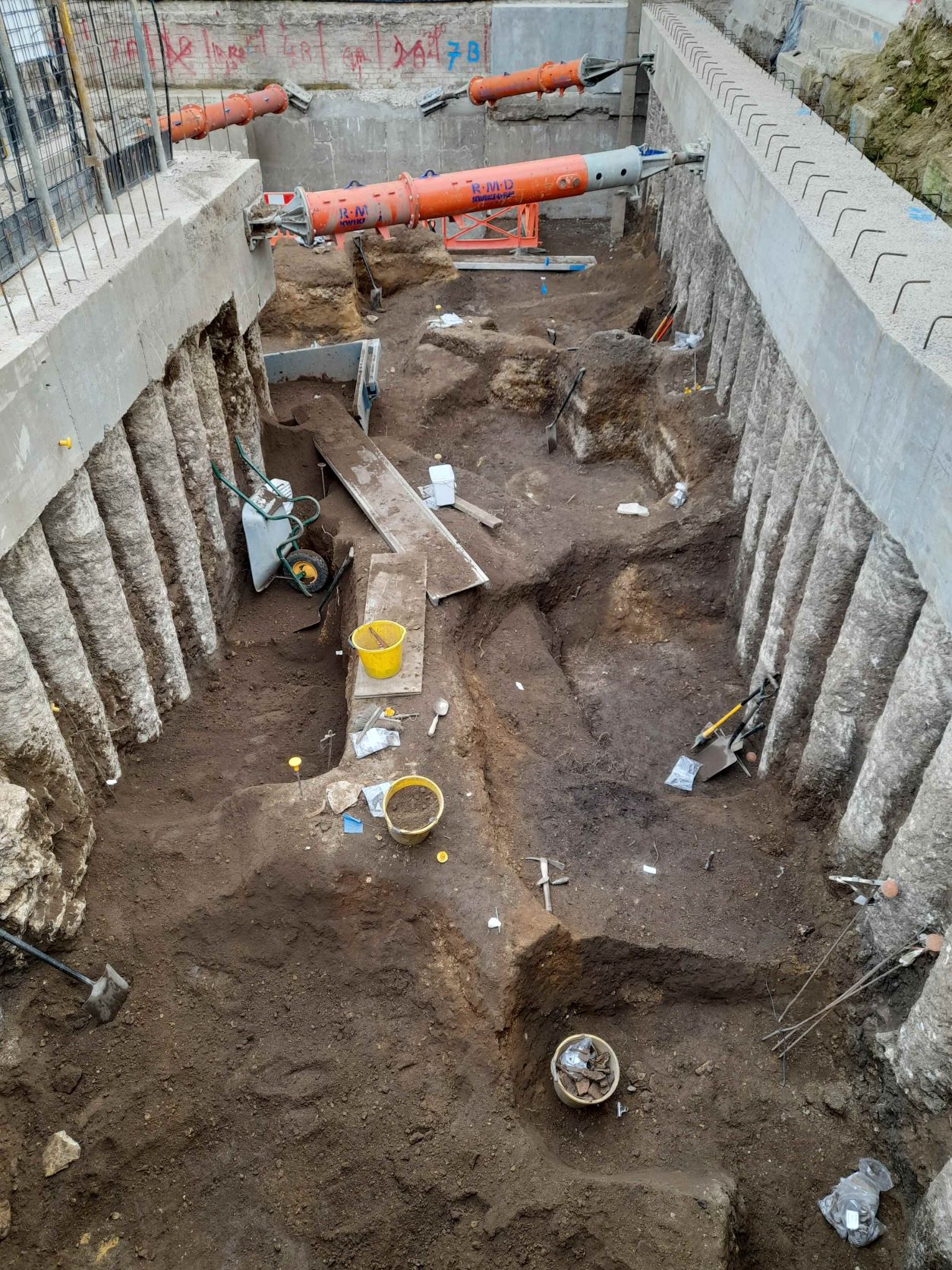It is now week 13 of Oxford Archaeology being onsite. They have provided the following updates:
The Norman Period mid11th - mid13th century
The west and south wings are full of pits that date to the post-Norman Conquest period when the Undercroft was constructed. Some of these pits contain light coloured soft deposits that may be excess quick-lime used in the manufacture of strong mortar (used in the building of stone structures).
The wealth and importance of the occupants of the site at this time is again reflected in the artefacts - of note is the large fragment of unique Roman-style ring-lamp (oil lamps were used on high status sites at this time). This object is a closed circular hollow tube with the stumps/scars of two applied 'dishes' or bowls surviving - opening into the hollow ring chamber. the ring would have acted as a sump for the oil and the dishes held the wick.
Medieval mid13th -14th century
The final remnant of the later 14th century building has now been excavated in the SE corner of site to reveal yet more intercutting pits spanning 300 years of occupation. The zoomorphic head on the fragment of gree-glazed pottery from the latest of these pits is thought to have a French influence on the design.
[Photo of the Norman pits in the the west wing]
